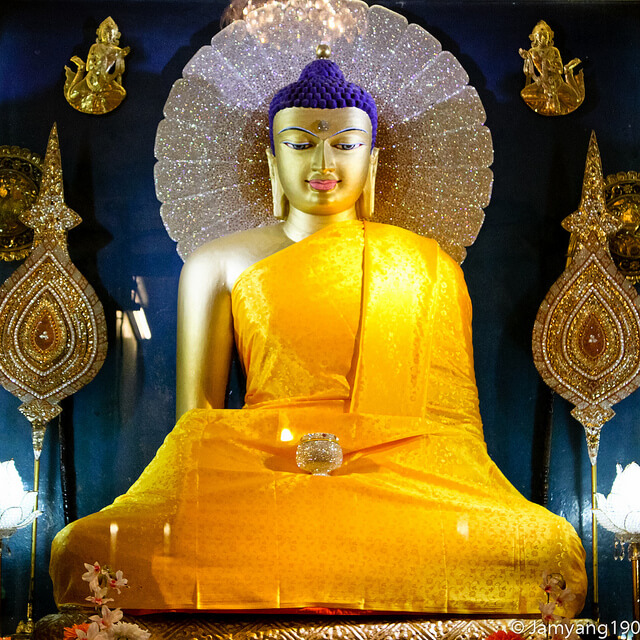
The Story of Buddha
Buddha (Tibetan: Sangye) primarily refers to Sakyamuni Buddha, Gautama Siddhartha, the Indian prince who attained enlightenment in the 6th century BCE, about 2,500 years ago. He is recognized across Asia as the founder of Buddhism for sharing his wisdom. However, the word “Buddha” holds a much deeper meaning—it does not simply denote someone who has awakened from ignorance to all-pervading wisdom, but also someone who has ended suffering and realized lasting, true happiness and peace.
The Life of Buddha:
Sakyamuni Buddha was born into the Sakya clan in the southern foothills of the Himalayas, near present-day Lumbini, close to the Nepalese border—this is the origin of his name. His father was the clan’s king, who built a magnificent palace and lived in great luxury with his wife, Queen Mayadevi. They ruled peacefully and happily, though their marriage remained childless for two decades.
One night, the queen had a remarkable dream in which a Bodhisattva, appearing as a white elephant, entered the golden palace and penetrated her womb. Following this, she became pregnant overnight. She carried the Bodhisattva for ten months, and when the time came to give birth, she set out for her parental home. Along the way, in the Lumbini grove near a grove of sal trees, amidst miraculous signs, she gave birth to her glorious son, whom she named Siddhartha, meaning “the one who fulfills all wishes.”
A hermit living in the nearby mountains noticed the king’s child and, upon seeing him, said: “This child, if he remains at home, will become a world-conquering emperor; if he leaves home and follows the inner path, he will become the Buddha who enlightens the world.”
The prince was raised in princely luxury befitting his rank, but his father, worried about the hermit’s prophecy, did everything to keep his son happy. Later, Siddhartha married and immersed himself in music, dance, and other sensual pleasures, living for another ten years in the comfort of the royal palace.
When his son, Rahula, was born, Siddhartha was 29 years old. By then, disillusioned with the vanity of court life, one night he left his luxurious life, accompanied by his favorite horse, and began wandering as a mendicant hermit. Despite searching for the path to liberation, disappointed by his teachers, he adopted an ascetic lifestyle to find the inner way. However, six years of solitude brought no desired results, so he abandoned his self-mortification, bathed in a river, and accepted food and drink from a nearby village girl named Sujata. Five companions who had followed him turned away, seeing this as a relapse into worldly life. Thus, the prince continued his quest alone.
During his wanderings, he reached the place now called Bodh Gaya. Sitting beneath a fig tree by a small river, he resolved to remain in deep meditation until he found the path to enlightenment. At dawn, in his 35th year, he completely freed his mind from all veils of confusion and attained perfect Buddhahood.
After the Tathagata’s enlightenment, he did not immediately share his knowledge. However, at the request of Brahma and other deities, he began teaching. Four weeks later, near Benares, at Sarnath, he gave his first teaching—the Turning of the Wheel of Dharma—to the five companions he had met during his ascetic years, presenting the Four Noble Truths.
Following this, Sakyamuni Buddha gained many disciples and spent the next 45 years traveling extensively across the Indian subcontinent and Central Asia teaching. He passed away at the age of 80 in Kushinagar due to illness sustained during his travels.
We keep you informed about empowerments, teachings, and more. We also offer opportunities for discounted early-bird tickets! Don’t miss out — subscribe now!